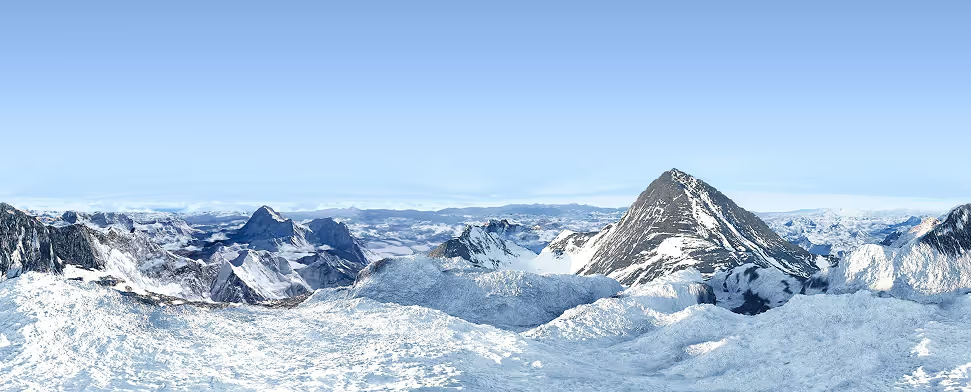
The North Face
An Interactive Ascent
A dazzling mobile AR experience
The Atlantic magazine’s high-profile tech edition needed a creative cross-over between the print feature and readers' mobile devices. The magazine's creative marketing studio, Atlantic Re:think, partnered with The North Face to feature two skier's historic ski descent down Lhotse Couloir in a mobile AR experience.
After an initial dive into the nuances of the technology, we found that the landscape of platformless WebAR wasn't quite mature enough to anchor an entire experience. So to accomplish the task, we integrated a QR code that sent readers to a mobile, gyroscope-responsive WebGL encounter designed to provoke an adrenaline rush.
When scanned, the experience transported readers straight into the heart of the Himalayas. No more passive scrolling — readers were now allowed to be active participants, immersed in the unfolding drama of the descent.



Recreating Everest and Lhotse in 3D
To achieve a high-res, top-tier immersive experience, we scoffed at the constraints of pixelated GIS and satellite imagery. No corners were cut; instead, we undertook the mountainous task of reconstructing an entire segment of the Everest massif from the ground up.
We started by digitally sculpting the mountains in Z-Brush, followed by meticulous hand-texturing in Substance Painter. After double-baking the peaks, the work was developed into a literal, walkable mountain complex. As a final touch, we designed and constructed nearly exact representations of the expedition's camps, equipped even with independently parallaxing 360-degree skyboxes (and all the mathematical wizardry that entails).
Thanks to Octane Renderer, we achieved fluid shadows and realistic sunlight conditions. Once fully baked, our final Lhotse model exhibited intense detail and a single-texture map for Three.js to load.
The task was to create a mobile AR experience to accompany a print story. The result was a portal to one of the most breathtaking locations on the planet. With smartphones playing the role of periscope, readers could use mobile-responsive live 3D to be a part of the expedition.






The project unfolded with remarkable speed. From inception to completion, Triptych navigated 38 days to finalize the project earmarked for inclusion in The Atlantic magazine's tech issue. Not only did we complete the project on time, we earned two accolades: FWA Site of the Day and The Mobile Site of The Week on Awwwards.








